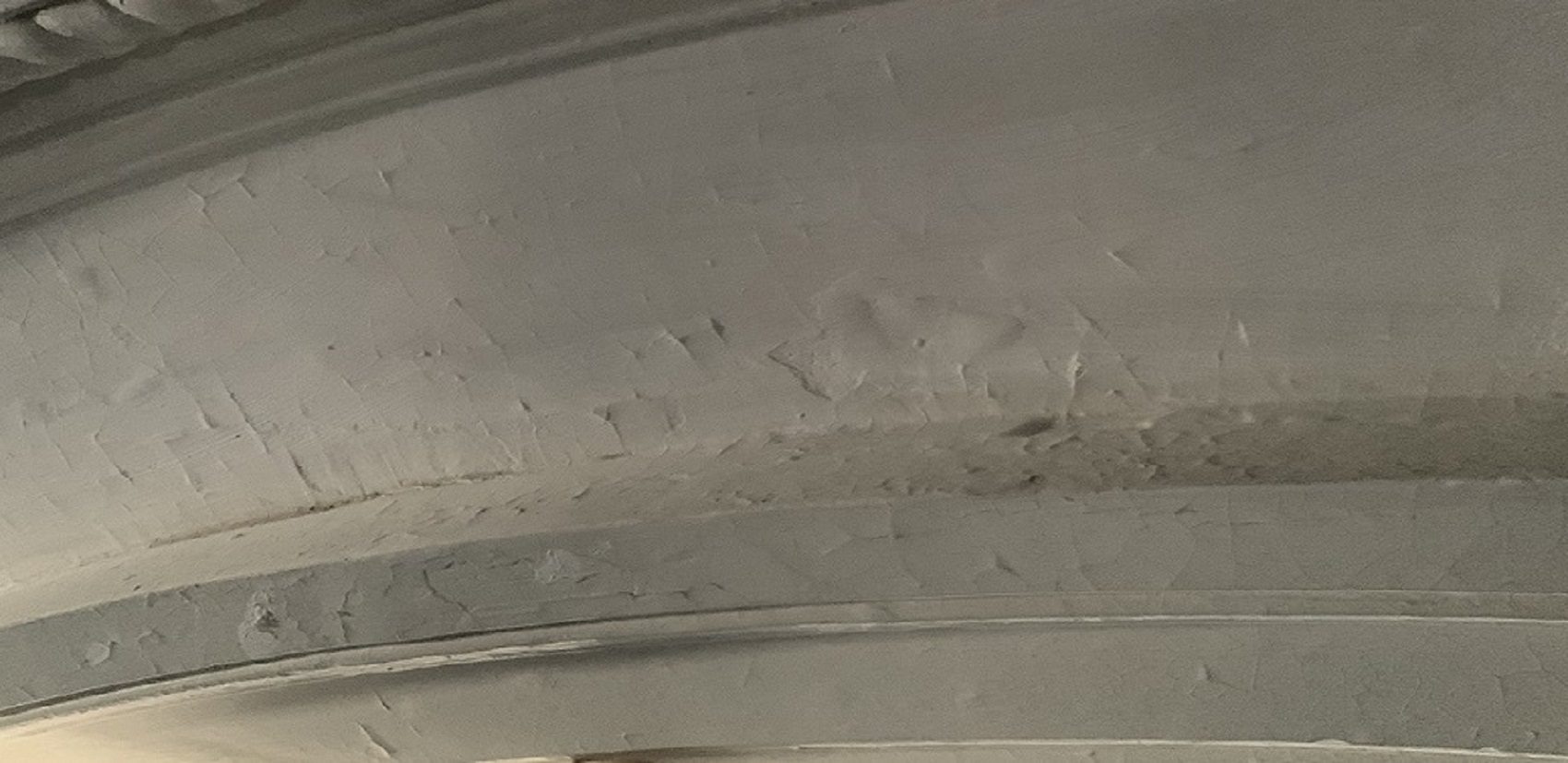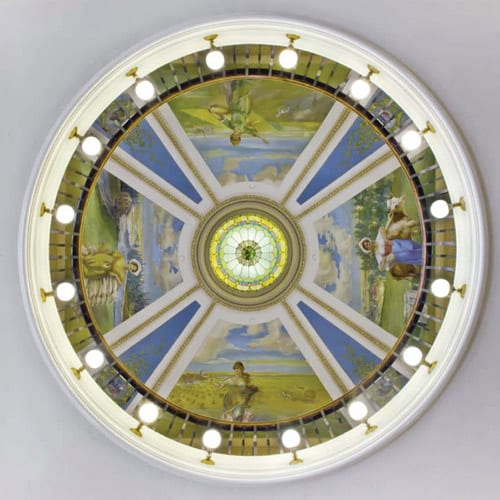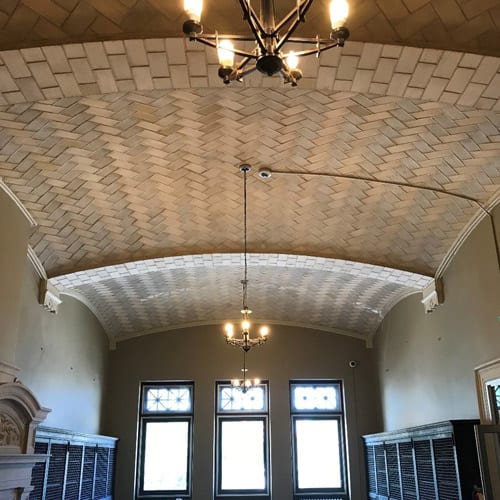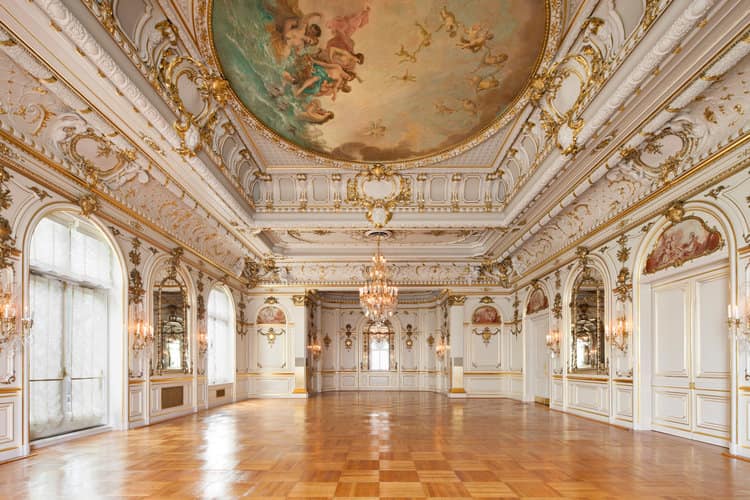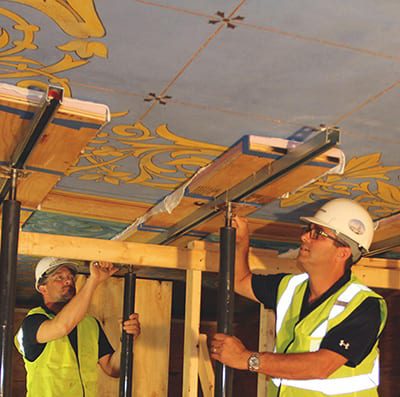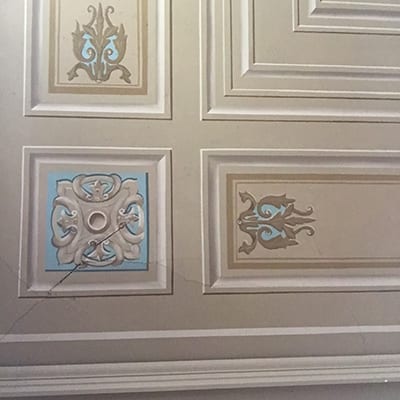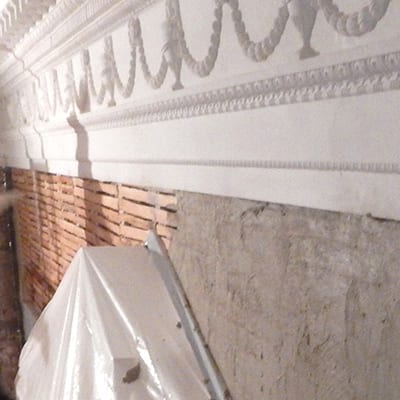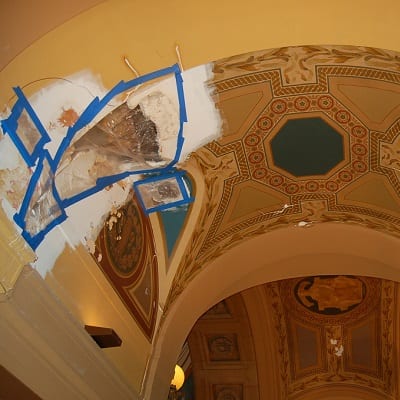Both simple and ornate plaster surfaces are the work of master plasters applying many thin layers of carefully mixed plaster to lath. Though the level of decoration may vary greatly, water has the power to destroy the work of even the most skilled plaster craftsman. Whether it is large quantities of water from a major roof leak, prolonged exposure to humid air, or condensation that that has penetrated the lath, plaster invariably will be damaged. It can be tough to identify if plaster damage is due to water, craftsmanship, or structural integrity of the building. There are several hallmarks of water damage that will help you identify if water is the underlying problem.
Subtle Discoloration
Commonly found near water access points, such as around a window frame, exterior door, or ceiling corners. This slight discoloration is often seen in older houses, which are less water tight. Often with a slightly brown or yellow hue, this discoloration can be noted on both plaster and any wall coverings placed over effected plaster, such as wallpaper or fabric.
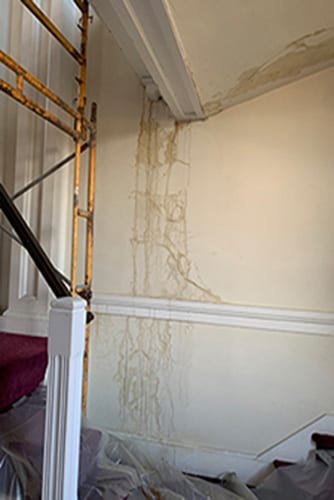
Drip/Streaking Stains on Paint
These elongated drip-like stains, usually with irregular borders, have a distinctly water-like appearance. They most commonly form where the wall meets the ceiling or on the plasterwork under a window. Usually the root cause of these stains is a leak(s) from the outside or a regular drip leak from plumbing. Prior to replacing the plaster work, the building envelop should be secured and the interior compartment of the wall treated for possible micro-organism growth.
Efflorescence
These are the salt deposits left behind when water permeates masonry, such as concrete blocks, brick, stone, and stucco. While these white or green crystalline salt structures are not hazardous to your health, they are an early warning sign that water is seeping into the building and may be indicative of a potentially larger water problem. Simply removing the salt buildup will not treat the underlying problem and an expert should be consulted to determine the scope of the damage and what potential damage might occur if left untreated. Over time, water can be wicked up from foundation masonry (or inward from exterior stone walls) and damage any plaster applied to it.

Flaking Paint
Paint and water are insoluble and an easy way to identify if plaster is water damaged is looking for flaking paint or air bubbles that burst and flake. Unlike flaking plaster, paint will flake with minimal exposure to water, while plaster often needs to get wet and re-dry before flaking occurs. If paint starts to flake or bubble, feel the plaster underneath the area; often it might feel damp or wet. If you are experiencing something similar, call a professional—do not paint over or try to re-plaster the area.
Mold and Micro-Organism Proliferation
Mold and other micro-organisms can pose serious health risks. If mold or mildew has formed on plaster it is usually the result of prolonged dampness, or repeated leaks. A professional must be called to thoroughly remove and treat both the plaster and the internal wall structure. Do not attempt to bleach or remove the growth, as it may not be the most effective method to treat the area. Additionally, it is important to identify the cause of any leaks and correct it prior to repairing plasterwork.
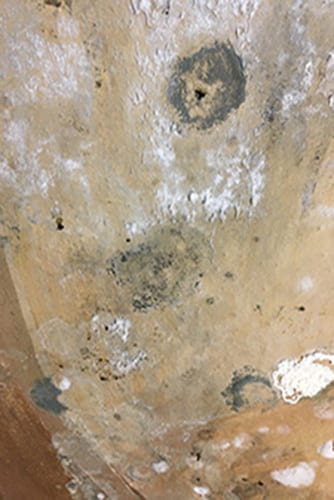
Water damaged plaster can have serious ramification for both your health and is often indicative of potential damage that may cause harm to the overall integrity of the structure. Prior to having plaster work repaired, ensure that the underlying cause of the water damaged has been fully and properly treated. Always consult a professional if you find mold, fungus, or other micro-organism growing. With a little time and knowledge, damaged plaster can be transformed back to its original state.
If you are in need of plaster restoration or repair services, please contact John Canning & Co.

